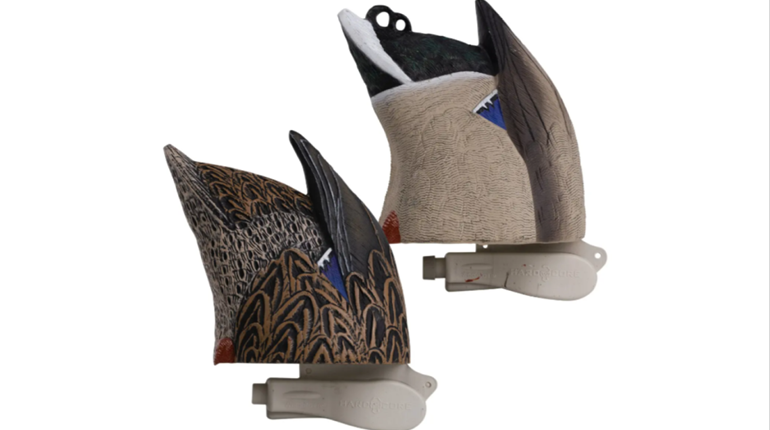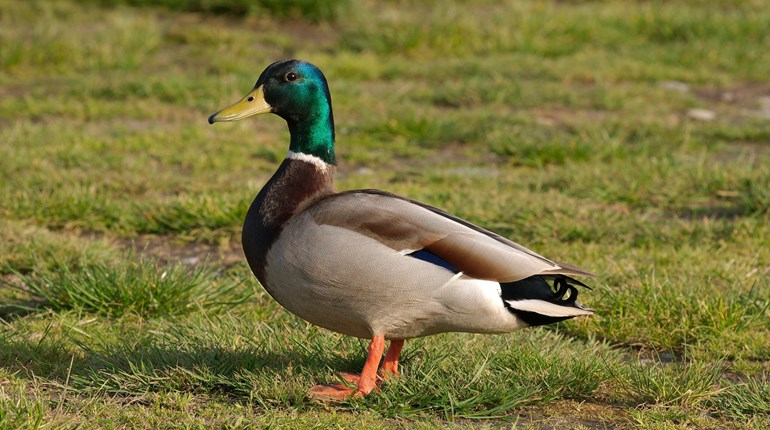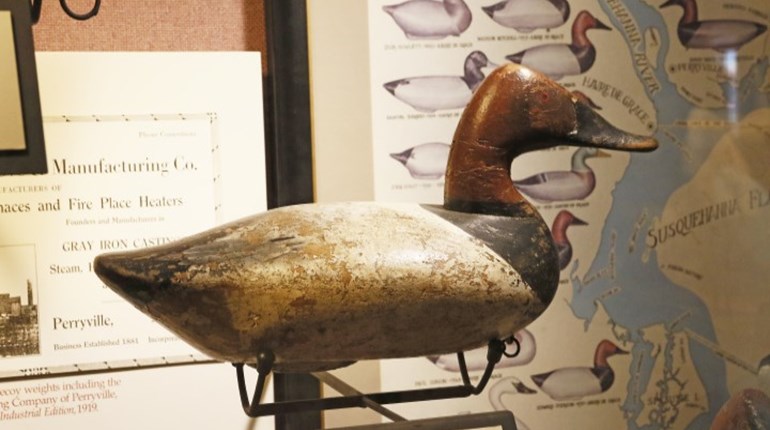A year ago I asked my long-time friend Jake about his first experience hunting diver ducks. With only a few seasons of use showing on his waders—and that limited to mallards and geese on farm ponds in Pennsylvania—I was eager to hear what he thought about our style of hunting. Though work kept me from experiencing it with him on that trip, I asked expecting to hear of his new-found love of gunning these superior ducks. (That’s right, Jeff Johnston I said superior.)
Surprisingly, the first words from his mouth were spoken in a tone trembling with apprehension: “You’ns are crazy.” (From what I’ve gathered, “you’ns,” spoken only in P.a., is used the same way as “ya’ll.”)
Mouth agape in disbelief, I fumbled, “What do you mean? What happened?”As my mind rummaged through endless potential disasters that could have befallen the group, Jake settled my inquiry: “That boat ride!”
I knew instantly what he was referring to, and so I chuckled. The ride to the spot: Which spot exactly I wasn’t sure, but it didn’t matter anyway. To get to any of our hunting waters on the Potomac River in time for the morning flight requires a pitch-black boat ride at 5 a.m. through some big, rough water that must have seemed like Poseidon’s personal roller coaster to a boy used to inland farm ponds.
I can just picture him now—sitting in the bow of the boat, nestled into throngs of decoys, thinking, Surely we’re going to wait till we can see, only to hear the motor kick in and feel a spotlight tossed his way.
“Watch for debris” is often the only instruction afforded a greenhorn. A moment of hesitation ends with the forward momentum as he quickly rotates to watch the nose, fumbling to turn on the spotlight, franticly considering that his young life might very well end in the 30-degree water not 20 feet from the dock because he can’t turn on the stupid light. Of course once he does, any relief and security the luminescence affords is instantly replaced with more panic. He can barely make out the large white buoy jutting 3 feet out of the water that reads “No Wake Zone” through a cotton field of fog. But just as the words register, our farm boy learns rather crudely that its enforcement is over; they are exiting the safe zone. At 35 mph across rolling, 3-foot waves, crouched in a skiff loaded with more decoys than you ever thought a sane person would own—let alone use on a single outing—it’s not so much watching for debris to avoid as it is praying you don’t see the log that’s going to do you in.
I’m sure Jake checked the buckle on his PFD more than once. That river doesn’t bode well for small boats and thin skin. We go big, we go fast, and on the right day, we even kill a few ducks.
“So you enjoyed the boat ride?” I asked with a grin.
“I can’t believe you’ns do that,” said Jake. “I thought we were gonna die.”
“But did you kill some birds?” I asked. I hoped his tale of woe was at least worth the new underpants.
“Man … it was awesome!”
Diver hunting is awesome. Though bluebills flying low in formation at mach 2 aren’t as wary as timber-bound mallards—indeed, “oblivious” seems a more fitting description of the bluebills—crossing shots in stiff winds and rolling waves, and the very sight of a raft of ducks in the thousands makes a diver hunt the bee’s knees in my book. And if you’re lucky enough for the birds to show, the weather to play nice and the dog to obey, you might just go home with a strap full of bluebills, ringnecks or the most regal of all ducks, the drake canvasback. But with so much gear and all the unforeseen variables that can cause misery, it’s not uncommon to find yourself wanting to sell your dog, sink your blocks and ditch your buddies at the dock.
Animal House
“For me it’s not about killing anymore; I just like to get out and watch the dogs work.” This locution has been used in some form or another by more old-timers than I can count. I’ve come to the conclusion that it must be required memorization in order to receive an AARP membership. Yet I can’t recall ever seeing one of those gray-haired poets without a gun while in the blind. Don’t get me wrong, I, too, relish the opportunity to witness the harmonious trifecta of man, beast and fowl, but I am not too humble—at least not yet—to admit I’m not getting out of a warm bed at 3 a.m. in December to wade in icy water just to throw bumpers to a dog.
Hunting with a dog can be both rewarding and trying. But in big water, any problems the puddle hunter might experience are compounded, with interest—sometimes frustrating a hunter to the point that he’ll debate the merits of such a companion. Ever had a dog tangled in a decoy line? How about three lines and 36 decoys in 15 feet of water? Ever hunted with a stubborn retriever? How about watching Bonehead chase a phantom cripple halfway across a mile-wide river?
Once we watched a canvasback fly away seemingly no worse for wear just 20 yards outside the decoys, but the Lab on board continued to chase it despite the red-faced shouts of “No bird!” from shore. The Lab was a spec on the horizon before the owner reluctantly agreed to a boat rescue. Thinking back, he was probably hoping we’d forgotten about the dog. As it happens, that big, blocky yellow found another cripple somewhere along the way and had it swimming figure-eights when we got there. At least he was persistent.But amidst all the predicaments I’ve seen dogs get into on big-water diver hunts, having to battle the native wildlife takes the cake.
Dixie, a beautiful chocolate Lab who would turn out to be one of the best duck dogs I’ve shared a boat with, was in the thick of her first season and performing like a titled pro. It was a slow morning in the blind when a group of bluebills skirted the outside of the blocks, bringing the tail end close enough for a volley that caught the wing of a drake. He dropped and Dixie was sent on the retrieve. But like so many divers do, that drake reanimated and hit the after-burners—and the chase was on.
At the 200-yard mark, while debating whether to go after the young pup, we were rendered speechless by a circling bald eagle with eyes glued on a free meal. Feet from closing the deal on her longest retrieve to date, Dixie must have thought the sky was falling as the kamikaze eagle whipped by only inches from her head, took a swipe at the duck and regained altitude. Turning to find the water void of attackers, Dixie regained her focus on the duck. But the duck, most likely due to instinct, began a series of evasive dives. Then the eagle, seeing the dog undeterred and the duck in panic mode, once again buzzed the deck, sending Dixie into yet another frenzied tailspin. This epic saga continued for another five minutes while we watched intently, screaming encouragement like camo-clad cheerleaders until the eagle rose with the stolen duck grasped firmly in its talons. Though we had lost the fight, it was hard at the time to justify anger after witnessing such a spectacle. Now, having experienced the same spectacle on multiple occasions, anger comes a bit easier.
Long-Lines: The Worst Best Invention Ever
It wasn’t so much the words—they could be said in jest—as it was the general demeanor. But when Wintersteen uttered, “Uhh, think we should fix the decoys first?” I decided right there that I wanted to kill him.
The fact of the matter was, we had fixed the decoys—over and over again.If you’re not familiar with long-lines, let me shed some light on the basics. Rather than having single decoys, each with its own line and weight, a long-line consists of many decoys, each with a short drop-line, attached to a main-line weighted at each end, resulting in a string of decoys. They are particularly convenient when setting out large numbers in big water. We typically run anywhere from four to 10 strings, with an average of a dozen blocks on each line. Now, if you’ve never set long-lines before, let me be the first to tell you it’s not as easy as it looks. Especially from a boat that wants to drift with the current opposite of where you’d like to place the lines. When it’s shallow enough to walk the lines out, we do—but that’s rarely the case.
On this particular January morning, with only a few hundred yards between the blind and the dock, we decided to set the lines prior to picking up Wintersteen, as it is much easier to maneuver and set the lines with two guys rather than three in the boat. Or so we assumed.
After setting the first few lines without a hitch, we motored against the current to drop the next anchor in the black water. That’s when things got nasty. What should have been an easy drift—tossing blocks over the side as we went—was made increasingly difficult as a gang of ice sheets encircled us. Unnoticeable at first, the ice was hell-bent on reclaiming turf and had teamed up with the current to increase its odds. The wind, seeing us outnumbered, took a cue from the current and chimed in to batter us. Nearly overwhelmed, we fought knuckles-tight against the elements, desperately grasping at plastic decoys and rope that became more entwined with every pull. All told, it took seconds to destroy what would have been perhaps the duck-killinest spread the world has ever seen.
We did the best we could to sort things out, but when the sun’s rays danced over the horizon, the realization that Wintersteen still needed to be ferried in was all the persuasion we needed to give up. At least we had a few blocks in the water. So we picked him up (he’d been enjoying his coffee on the dock) and delivered him to the blind when he asked if we should “fix the decoys.”
As I quietly contemplated his demise, Eric’s timely shout—“Just get in the damn blind!”—seemed to extend my friend’s life. We sat silent in the blind, shoulders hunched low, eyes scanning with dismal hope until Wintersteen fired and cart-wheeled a bufflehead into our “spaghetti á la bluebill” spread.
“Good thing we ain’t hunting mallards,” he said with a guilty-dog grin. Indeed it was.
Epilogue
As a duck hunter I’ve learned to take the good with the bad. For every strap I’ve filled, I’ve returned home broken and empty-handed three times over. I know that even on the remote chance the weather plays out like it’s supposed to, bad days afield are intrinsic to our sport. No one can control the ducks. And with so many variables involved in the pursuit of waterfowl, bad days can be as varied as the types of ducks we hunt. Every different style, region and setup invites a different set of tribulations. And while I’m not normally one to argue over who stepped in the bigger pile of muck, when things don’t go according to plan the fowler in pursuit of diver ducks has it particularly bad. But as all duck hunters know, the worst days on the water often become warm tales in the blind after the coffee’s gone cold and the birds don’t show. So I keep hunting, hoping they do.




































